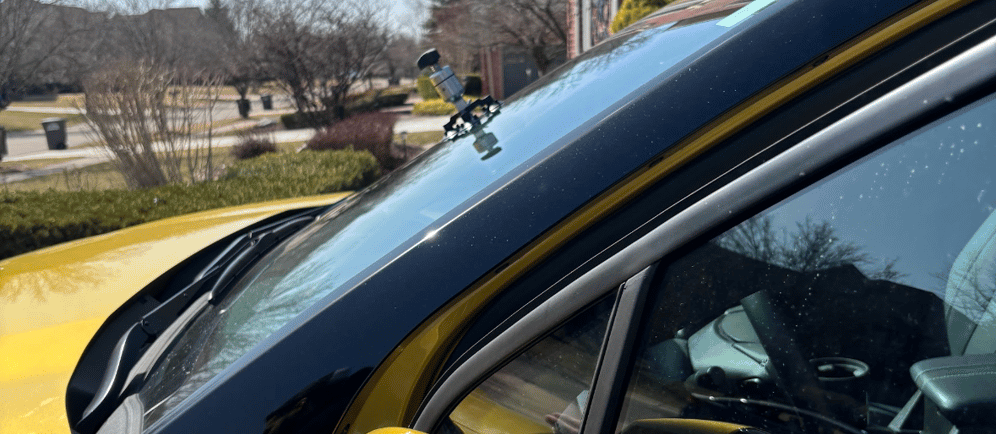The Science Behind Windshield Laminated Glass: Understanding Durability and Safety


Introduction to Windshield Laminated Glass
Laminated glass is a type of safety glass widely used in automotive windshields, primarily due to its unique construction and inherent safety features. Unlike traditional tempered or annealed glass, laminated glass consists of two or more layers of glass interlayered with a plastic resin, typically polyvinyl butyral (PVB). This unique construction not only enhances the glass's resilience against impacts but also ensures that, in the event of a break, the glass fragments adhere to the interlayer rather than shattering into dangerous shards. As such, laminated glass plays a crucial role in enhancing passenger safety during accidents.
The importance of laminated glass extends beyond mere impact resistance. The interlayer also serves as an acoustic barrier, dampening noise from the outside environment and improving the overall driving experience. Furthermore, laminated glass provides UV protection, shielding passengers from harmful rays while also helping to reduce interior fading caused by sun exposure. The dual advantage of safety and comfort makes laminated glass a preferred choice for modern vehicles.
Materials Used in Laminated Glass
Laminated glass, specifically utilized in automotive windshields, comprises a combination of materials that work synergistically to enhance both durability and safety. The primary components of laminated glass include two or more layers of glass that sandwich an interlayer material. This unique composite structure serves to absorb impact energy and reduces the risk of shattering, a critical feature for vehicle safety.
The glass layers are typically made from high-quality float glass, which provides optical clarity and strength. Float glass is produced by a method wherein molten glass is floated on molten tin, creating a uniform thickness and a smooth surface. This quality makes it ideal for windshields, where visibility and structural integrity are paramount. In addition to float glass, certain manufacturers have begun experimenting with tempered or extra-thick glass to further enhance protection against impacts.
The interlayer is another crucial component in laminated glass. The most commonly used interlayer is polyvinyl butyral (PVB), a versatile polymer known for its excellent adhesion properties and ability to absorb shocks. PVB not only holds the glass layers together but also acts as a barrier against UV radiation and sound. As a result, windshields made with PVB contribute to a more comfortable and safer driving experience. Additionally, innovations in interlayer materials have led to the incorporation of other polymers and proprietary compounds that can improve performance under varying environmental conditions.
Some advanced applications include interlayers that enhance solar control, protect against acoustic disturbances, or serve specialized functions, such as enhancing security. These advancements in material science have significantly influenced the design and functionality of laminated glass, ensuring that modern windshields meet high safety standards while providing driver and passenger comfort.
The Engineering Process of Laminating Glass
Laminated glass is a specialized product that enhances safety and durability through a precise engineering process. The inception of this glass type involves several critical steps, primarily bonding, curing, and tempering, each contributing to its overall integrity and performance under stress. Understanding these techniques is vital for appreciating the benefits laminated glass offers, especially in applications such as vehicle windshields.
The bonding process is the first step in the creation of laminated glass. This involves sandwiching a layer of polyvinyl butyral (PVB) or ethylene-vinyl acetate (EVA) between two sheets of glass. This interlayer is crucial, as it holds the glass together even when shattered, preventing dangerous shards from being ejected. Various factors, including temperature and pressure, play a significant role in ensuring optimal adhesion, thus establishing a strong bond that enhances the glass's resilience.
Following the bonding phase, the glass undergoes a curing process. This step is essential for ensuring that the interlayer fully adheres to the glass; it typically involves heat and controlled environments. The curing process allows the interlayer to bond completely, enhancing the glass's ability to withstand impacts and stresses. Proper curing directly correlates to improved durability, which is a vital consideration for any application where safety is paramount.
Finally, the tempering of laminated glass is an additional engineering technique that enhances its structural performance. Tempered glass is heated to high temperatures and then rapidly cooled, creating a toughened surface. This process not only strengthens the glass but also helps it withstand more significant forces without breaking. When combined with the lamination process, tempered glass offers extraordinary durability and resistance to shattering, making it a preferred material for automotive and architectural applications alike.
Benefits of Laminated Glass for Vehicle Safety
Laminated glass has become a pivotal component in the automotive industry, particularly in the manufacturing of windshields. Its unique construction, composed of two layers of glass sandwiched around a polymer interlayer, provides a multitude of safety benefits that significantly enhance passenger protection. One of the primary advantages of laminated glass is its ability to resist shattering upon impact. Unlike traditional tempered glass, which may break into sharp shards, laminated glass remains intact, maintaining its structural integrity and preventing hazardous flying debris during collisions.
This characteristic is vital in reducing the potential for injuries caused by glass fragments in an accident. Studies reveal that vehicles equipped with laminated windshields can considerably decrease the likelihood of serious injuries from glass-related incidents. Moreover, laminated glass serves as a barrier, effectively blocking harmful ultraviolet (UV) rays. This feature not only protects occupants from skin damage but also helps preserve the vehicle’s interior, reducing fading and deterioration over time.
Another notable advantage of laminated glass is its capacity for acoustic insulation. Vehicles that incorporate laminated glass in their windshields experience a noticeable reduction in external noise, which contributes to a more comfortable traveling environment. This benefit is particularly appreciated in urban settings or during long-distance travel where external sound can be a significant distraction. Furthermore, the enhanced durability of laminated glass can lead to lower maintenance and replacement costs over the vehicle's lifespan, making it a cost-effective choice from both a safety and economic perspective.
In conclusion, the use of laminated glass in vehicles offers several critical safety advantages, ranging from enhanced protection against glass shattering to reducing UV exposure and improving acoustic comfort. With real-world applications supporting these benefits, laminated glass is an essential feature for any safety-conscious vehicle manufacturer.
Testing and Standards for Laminated Glass
Laminated glass, commonly utilized in automotive windshields, is subject to rigorous testing and standards to ensure durability and safety. The primary focus of these tests is to assess the glass's ability to withstand various impact forces, as well as to examine the effectiveness of its bonding and adhesion properties. Impact resistance is a critical aspect of laminated glass performance, as it determines how well the glass can absorb shock without shattering. Different standards, including those set by the National Highway Traffic Safety Administration (NHTSA), mandate that laminated glass be subjected to standardized impact tests, which simulate conditions that windshields may face during accidents.
One of the essential impact tests involves dropping a weighted object onto the glass from specific heights, measuring the glass's resistance to breakage. This method helps ascertain whether the laminated glass can maintain its structural integrity upon impact, thus protecting vehicle occupants. Additionally, adhesion tests are conducted to evaluate the quality of the interlayer that binds the glass layers together. This interlayer, often made from polyvinyl butyral (PVB), plays a crucial role in ensuring that even if the outer layer of glass shatters, the glass will not break away completely, reducing the risk of injury from flying shards.
Compliance with safety regulations is paramount for manufacturers of laminated glass. As such, adherence to standards set forth by organizations, including the NHTSA, is mandatory. These standards provide guidelines on the minimum requirements for impact resistance, adhesion strength, and overall performance of laminated glass, ensuring that it meets safety expectations for automotive applications. Manufacturers regularly need to submit their products for certification to verify their compliance with these testing standards, thereby instilling confidence in the performance and safety of laminated glass in windshields.
Innovations and Future Trends in Laminated Glass Technology
Recent advancements in laminated glass technology are revolutionizing the automotive industry, paving the way for enhanced durability and safety features. One notable innovation is the development of self-healing materials. These materials have the ability to autonomously repair minor scratches and chips that occur on the surface of laminated glass. By utilizing advanced polymer chemistry, self-healing laminated glass can significantly improve visibility and structural integrity, promoting long-term safety for vehicle occupants.
Advanced coatings also play a critical role in the evolution of laminated glass technology. These coatings are designed to enhance various attributes of the glass, such as UV resistance, hydrophobic properties, and anti-reflective capabilities. For example, hydrophobic coatings allow water to bead up and roll off the glass surface, enhancing driver visibility during inclement weather. Furthermore, anti-reflective coatings can minimize glare, providing a safer driving experience by reducing distractions from sunlight or headlights.
The integration of smart technology in laminated glass is another exciting trend. This includes features such as embedded sensors for monitoring environmental conditions and providing real-time data to drivers. Additionally, the incorporation of heads-up display (HUD) technology can project essential information, such as navigation prompts or speed readings, directly onto the windshield. This integration not only increases functionality but also contributes to safer driving by allowing the driver to maintain focus on the road.
As the automotive landscape continues to evolve, these innovations in laminated glass will likely lead to enhanced safety, durability, and overall vehicle performance. Future applications may encompass more sustainable materials and further advanced smart functionalities, solidifying laminated glass as a cornerstone in the development of safer automotive solutions. The ongoing research and development in this field signify a promising horizon for enhanced vehicle safety and consumer confidence.
Conclusion: The Importance of Understanding Laminated Glass
Laminated glass has emerged as a crucial component in vehicle engineering, serving not only to enhance safety but also to contribute to the overall performance of automotive structures. Throughout this exploration, we have delved into the unique properties of laminated glass, particularly its durability and ability to provide a protective barrier against external forces. This glass type is designed to hold together even when shattered, significantly reducing the risk of ejection in the event of a collision and minimizing injury from flying shards. These qualities underline the fundamental safety benefits of using laminated glass in windshields and other automotive applications.
Further, ongoing research and development in the realm of laminated glass are vital for addressing emerging safety challenges faced by modern vehicles. As automotive technology advances, including the integration of driver assistance systems and electric vehicles, the materials used must evolve to meet new requirements. Laminated glass can be engineered to harness additional features, such as improved acoustic insulation and ultraviolet light filtration, thus enhancing the comfort and health of passengers. Additionally, innovative manufacturing techniques and the exploration of alternate materials offer opportunities for optimizing the environmental impact of laminated glass production.
In conclusion, having a comprehensive understanding of laminated glass is imperative for automakers, safety regulators, and consumers alike. As research continues to push the boundaries of what laminated glass can achieve, the automotive industry stands to benefit from enhanced safety measures that protect occupants and improve overall vehicle performance. Staying informed about developments in this field is essential for maintaining effective standards in automotive engineering and, ultimately, for ensuring a safer driving experience on our roads.
